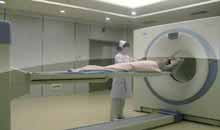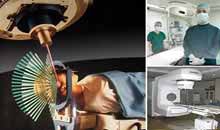- Basic
- Symptoms
- Diagnosis
- Treatments

What is Cervical Cancer?
Cervical cancer is a malignant tumor develops in uterovaginal portion or cervical canals. Its high incident age is around 50. Besides, it inclines to occur in the females who are married and give birth to babies early, or are proliferous or infected by HPV. In recent years, the incident age of cervical cancer is tending to young females.
Incidence and Death Rate of Cervical Cancer
The incidence of cervical cancer rages second of all female cancers. Each year, there are about 53,000 new developed cases globally, 85% of those cases are from developing countries.
About 76,000 people dies of cancer every year all over the world, which takes up 13% of global deaths. Among them, the death number of cervical patients is closed to 27,000 and 88% of them are in developing countries.
What Causes Cervical Cancer?
70% cervical cancer cases arouse from human immunodeficiency virus (HIV). Besides that, smoking and human immunodeficiency virus (HIV) can cause cervical cancer. Other risk factors are also mutually related to each other to lead to cervical cancer.
Other risk factors of cervical cancer include choamydiae infection, improper eating habits, or frequent contact or taking of harmonic medicines, family history of cervical cancer, or taking oral contraceptives often, having sex and bearing baby in an early age, prolificacy and so on. All those risk factors would possibly cause cervical cancer.
Clinical Stages of Cervical Cancer
Stage 0: the cancer cells are still limited in cervical intraepithelial regions. The cervical cancer in stage 0 is also what we call primary cancer.
Stage I: the cancer cells localize in cervix and encroachment occurs.
Stage Ⅱ: the cancer cells have encroached to vagina but do not cover 1/3 of vagina, or have encroached to paracervical connective tissues but do not reach pelvic wall.
Stage Ⅲ: the encroachment has reach the lower 1/3 of vagina or the cancer cells have encroached to cavum pelvis and bilateral hydronephrosis occur.
Stage Ⅳ: cancer cells have spread out from generative organs or surpass cavum pelvis to encroach to rectum, gall bladder or other distant organs.
Post-operative Care of Cervical Cancer
1. Mental care. Cervical cancer patients may easily develop the emotions like fear, anxiety, upset and so on. The family should care and support the patient at moments.
2. Hygiene care. Wash the cunnus and urinary meatus twice a day to keep cunnus clean and apply antibiotics to prevent wound infection.
3. Exercise care. Have exercises like abdominal breathing and drawing up the anus, that can enhance the contractility of urethra muscle and sphincter urethrae and help the injured nerves of gall bladder recover.
4. Diet care. Have the foods that are rich in vitamin, proteins and easy for digestion to enhance the resistance of cervical cancer patients.
Cervical cancer is one of the common malignant cancers among females. It is the only cancer that with known cause. That is human papillomavirus(HPV),which can spread directly through dermal contact and has an incubation lasting for more than ten years. Cervical cancer is preventable and detectable. Learning about cervical cancer symptoms and undergo screening regularly can help discover cervical cancer and take up treatment as early as possible.

Signs of cervical cancer
1. Cervical erosion
Cervical erosion: cervical cancer patients usually are accompanied with cervical erosion, and severe cervical erosion is both main factor and symptom of cervical cancer.
2. Contact bleeding
Contact bleeding: contact bleeding is the most prominent sign of cervical cancer, which can be found in the form of colporrhagia in 70%~80% of cervical cancer patients. It often appears with fresh blood in vaginal secretion during sexual activities, gynecological examinations, or making great effort when loosening stools.
3. Irregular vaginal bleeding
Irregular vaginal bleeding: Menstrual period come back to old women years after menopause. As there will be no symptom like stomachache or waist pain, and the bleeding amount is usually low, it is easily ignored. However, irregular vaginal bleeding is early sign of cervical cancer, which has called many elder patients’ attention to go to hospital and thus helped them with early diagnosis and treatment.
4. Pain
Pain: pain usually occurs in the lower stomach or lumbar-sacral area, sometimes in the upper stomach, thigh and hip joint. It becomes severer in menstrual period, defecation or sexual activities. Especially when the inflammation spreads backwards to the utero-sacral ligament or along the bottom of broad ligament, chronic inflammation of connective tissue next to uterus is formed and cervical cardinal ligament thickens, the pain will become even severer. When touched in the cervix, patients will feel pain in the iliac fossa and the lumbar-sacral area, while some other patients can even have symptoms like nausea.
5. Increasing vaginal secretion
Increasing of vaginal secretion: Clinically, about 75%~85% of patients have various degrees of vaginal secretion increase. Most of them appear as increasing of leucorrhoea, which later is accompanied with smell and color changes. Due to the stimulation of the lesion, cervical glands becomes active in its secretion function and produce mucoid leucorrhoea. The abnormalities of the leucorrhoea, including amount increasing and characteristic changing, are early signs of cervical cancer.
Experts from Modern Cancer Hospital Guangzhou remind that, if you have above symptoms, go to the hospital timely for examination and treatment.
Good cervical cancer examination or screening can help patients diagnose cervical cancer so as to detect cervical cancer as early as possible and timely perform cervical cancer treatment.
Cervical cancer is the one most women worry a lot because it threatens female’s health and life. Good cervical cancer screening and diagnosis are respectively helpful for cervical cancer prevention and cervical cancer treatment effect. The following methods are cervical cancer diagnosis methods introduced by experts of Modern Cancer Hospital Guangzhou.

Cervical Scraping Smear Cytological Examination
Cervical scraping smear cytological examination is the main approach for detecting precancerous lesion of cervical cancer and early cervical cancer. Be sure to draw the tissue of the wanted spot and careful microscopic examination for there might be 5-10% false negative rate, therefore, clinical situation shall be combined to conduct examination periodically. This is what we can apply as screening.
Iodine Test
Normal squamous epithelium of cervix or vagina is rich in amylon and can be dyed into brown by iodine solution, while columnar epithelium of cervical canal, cervical erosion and abnormal squamous epithelium area (including squamous metaplasia, atypical hyperplasia, cancer in situ or infiltrating carcinoma area) are free of amylon, so they cannot be dyed. In clinical, vaginoscope is applied to expose cervix, and then superficial mucago shall be wiped out, after that smear the cervix and fomix with iodine solution, if there is any abnormal iodine negative area, then biopsy of such area shall be passed for pathology check.
Biopsy of Cervix and Cervical Canals
Perform smearing on these examination of III-IV or above of cervical scraping smear cytological examination, if the biopsy of cervix is negative, then the biopsy for 4 spots on point 6/9/12/3 of the section area between cervical squamous and columnar epithelium shall be carried out; or draw tissue multiple spots for biopsy
Vaginoscopic Examination
Vaginoscopic examination cannot directly diagnose cancer tumor, but can help biopsy to choose right position. It is estimated that if biopsy is performed with the help of vaginoscopic examination, then the diagnosis of early cervical cancer can reach to 98% accurate rate. However, vaginoscopic examination cannot replace scraping cytological exanimation or biopsy, and cannot detect the lesion inside cervical canals as well.
Experts of Modern Cancer Hospital Guangzhou remind that good cervical cancer examination and screening can help people to find cervical cancer in timely manner so as not to delay the treatment for cervical cancer.
Cervical cancer is a malignant tumor arising from vagina and cervical canal, which is one of the most common malignant tumors in the female genital tract. Its level of malignancy is high, and when found, about 70% of patients with cervical cancer has progressed to advanced stage. Moreover, the incidence rate of cervical cancer is high in the Philippines , so early detection and early treatment should be done to prevent its further spread.

There are many kinds of treatment methods for cervical cancer, but what the most important is to choose the treatment method most applicable to the patient. The cervical cancer treatment includes surgical resection, combined therapy of TCM and western medicine, interventional therapy, biological immunotherapy, radiotherapy, and chemotherapy, etc, but before choosing what kind of treatment, there are lots of factors that should be considered, including tumor size, stage, the patient’s age, health condition, etc.
Currently, the most common treatment options for cervical cancer are surgery and radiotherapy. Surgery is applicable to patients with early cervical cancer, of which primarily indicates radical hysterectomy that means the surgical removal of part of vagina , parametrium, and the bilateral pelvic lymph nodes, while if the patients’ ovaries have no lesions, they can be preserved. The advantage of surgery is that with once surgery, the early cancer can be completely removed with short treatment period, while its disadvantage is the regions involved are wide, in addition, after the surgery, complications like difficulty in urination may be caused, thus the patient needs to go through a period of recuperation until the function returns to normal.
Radiotherapy can be applied to cervical cancer in each stage, including advanced cervical cancer. For both the elderly and those with poor heart function who cannot tolerate surgery, radiotherapy is a good treatment option. However, radiotherapy will cause some complications, mainly including radiation rectitis and cystitis, which need active treatment and recuperation until they slowly recover.
Among radiotherapy, 125I seed implantation is also one of the effective cervical cancer treatment options. Cervical cancer is sensitive to radiation, therefore, either early or advanced cervical cancer have a good therapeutic effect. Radioactive particle therapy places radioactive particles inside tumor under the guidance of CT or B ultrasound, and then these particles will constantly emit radiation to kill the tumor and cut off its way to spread.
Cervical treatment, such as chemotherapy and radiotherapy, do effectively kill cancer cells but they also kill normal cell and the immunity of patients will easily be reduced and cause some side effects such as weakness, vomiting, etc. Biological immunotherapy could help improve immunity and alleviate the side effect caused by chemotherapy and radiotherapy. Biological immunotherapy is to inject immune cells to patient’s body so that the immunity reinforces.
In fact, there are various types of cervical cancer, thus the patients should never give up hope, only by active cooperation with your doctors and then choosing the treatment mostly applicable to you can the cancer be under effective control.
If you have any questions, please contact us via online consultation, email or phone call. If you find our website useful, please follow our FaceBook and YouTube, health information will be updated regularly.




























